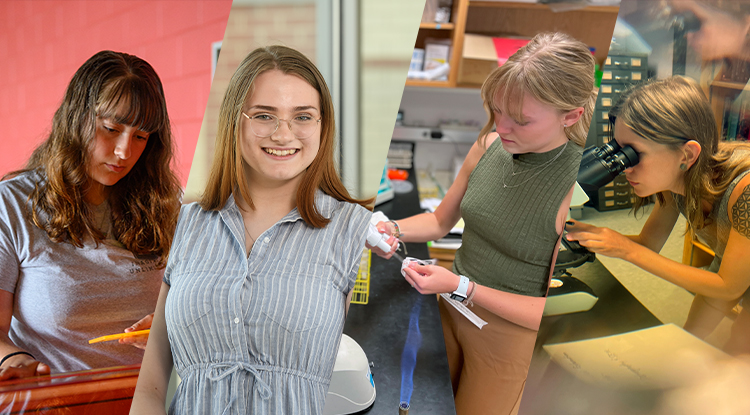
Students in this year’s Undergraduate Summer Opportunities for Applying Research (U-SOAR) program will present their research at a symposium Friday, August 5, at 11:00 a.m. in the HUB Monongahela Room.
Want a preview of the research you can hear about Friday? See how four students explain what they worked on this summer:
Morgan Haley: Taiwan Mountain Building
Morgan Haley, a geoscience major from Templeton, will present “Documenting the Plastic Strain Regime in Eastern Taiwan,” which she worked on with professor Jonathan Lewis. Her research focuses on rock microstructures from Taiwan and what they mean in the mountain-building process.
Emma Fetchko: Kidney Regeneration
Emma Fetchko, a natural science/pre-dentistry major from Dayton and a student in the Cook Honors College, will present “Identifying Peptides That Bind to the lhx1a Protein,” a project she worked on with Cuong Diep, professor of biology. Fetchko is studying kidney regeneration in zebrafish, which could offer clues in the future treatment of kidney disease in humans.
Amber Lawrence: White’s Woods Usage
Amber Lawrence, a sociology major from Mahanoy City, will present “Saving a Forest: One Survey at a Time,” a project she worked on with Brian Okey, professor of geography. Lawrence is measuring public opinion on the use of White’s Woods, a recreational forest area in Indiana.
Rose Burger: Metals and STEAM
Rose Burger, an art education major from Butler, will present “Rhino Software and Cloisonné Enameling,” which she worked on with Sharon Massey, associate professor in the Department of Art and Design. Burger’s work focuses on use of this software and this enameling technique and on the making of reusable metalsmithing tools.